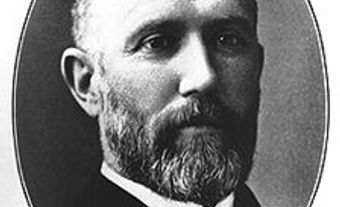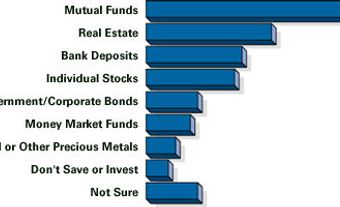Insurance
Insurance can be defined as an agreement under which some or all economic losses are transferred to an insurer who, for a premium, promises to compensate the insured for the losses resulting from specified risks (see INJURY AND PREVENTION) during the term of the agreement.
The modern world is full of hazards. While the perils - accident, fire, sickness or death - may result in financial losses, it is the hazards that create the potential for losses. "Risk," a term used to reflect the likelihood of a loss, is faced continually by individuals, organizations and society as a whole. The need for safety and security is deeply entrenched in human nature, and most people fear the threat of loss posed by risk. It is therefore not surprising that attempts to cope with risk have been developed since early in man's history.
The idea of pooling risks originated in ancient civilizations. Chinese merchants divided their cargo among several ships during dangerous trips in China's waterways. Through such pooling, no single merchant would suffer a total loss as a result of a shipping disaster. Various forms of risk sharing were practised in ancient Greece and Rome and by the trading nations of the Middle Ages. The concept of transferring the economic consequences of risk, ie, the purchasing of insurance protection, is an important constituent of risk management.
Although a number of parish and municipal fire-insurance companies operated in the mid-1830s in Lower and Upper Canada, the first Canadian life-insurance company was founded in 1847 in Hamilton, Ont. The formation of major insurance companies (Mutual Life, Sun Life, Confederation Life and London Life) in the 1870s was prompted by the passing of the first Canadian insurance law in 1868. With industrialization and the introduction of new technologies, the insurance industry developed rapidly.
Underlying Principle of Insurance
Insurance involves an agreement between the insured, who pays a premium, and the insurer, who promises to reimburse the insured for financial losses incurred from specified risks. For an insurer to enter such an agreement with an individual or an organization, a large enough number of agreements covering similar risk characteristics are required. By combining many risk exposures, it is possible to predict the collective losses quite accurately.
The underlying principle is the law of large numbers, which - in the context of insurance - states that with an increasing number of risk exposures the actual losses approach their expected value quite closely. The expected collective loss is then shared proportionally by all the insured in the form of premiums. With insurance, individuals or organizations exchange the risk of uncertain but potential losses.
Operation of Insurance
An insurance agreement is a contract between the insurer and the insured defining the risk to be covered, specifying the conditions under which the contract applies, and outlining the procedure for settlement. Insurers are either privately owned corporations or government-operated agencies. Most private insurers are stock and mutual companies. Stock companies are profit oriented and owned by shareholders; mutual companies are owned by the insurer, and any excess of income over claim settlements and expenses is returned to the insured in the form of dividends or reduced premiums.
An association of individuals can also act as insurers. In such an arrangement the individual insurers characteristically assume the risks personally and are therefore liable for loss settlement with their personal assets. The best known of such associations is Lloyd's of London, which operates worldwide and insures large risks that other insurers may have rejected.
Government-operated agencies also provide protection, typically mandatory, against certain risks. Such programs are termed social insurance (see SOCIAL SECURITY) and include WORKERS' COMPENSATION plans, automobile insurance in certain jurisdictions, and some pension plans. Such programs do not necessarily operate on the implicit assumption that sufficient funds are accumulated in advance for the payment of losses; payments are made from general tax revenues.
Supervision and Regulation
The insurance industry is regulated for a number of reasons, eg, because premiums are paid in advance and benefits may be paid in the (far distant) future to the insured or to others with little or no power to protect their interests; to protect consumers from unfair practices; and because unreasonably low or high premiums can lead to insolvency or to unwarranted profits.
In addition to self-regulation through industry associations, the responsibility for supervision of insurance in Canada is shared by the federal and provincial governments. The federal Department of Insurance is responsible for the registration and licensing of federally registered companies and is concerned with their ability to meet obligations to policyholders. This is accomplished by requiring insurance companies to submit financial statements to establish that they have sufficient financial resources (through solvency tests) and by restricting the investment of the funds of insurance companies.
The provincial superintendents of insurance prescribe statutory contract conditions, regulate the licensing of agents, brokers and adjusters, and regulate (in several provinces) the rates for automobile insurance. Nevertheless, insurance companies can and do go bankrupt (although this is quite rare), leaving the insured - particularly after a loss - in a difficult position, because little if any compensation for their losses can be expected.
Insurance "Products"
A large variety of different forms of insurance protection are available, eg, life insurance, which provides financial resources to support the survivors of the insured or to pay for the obligations (credit insurance) in case of the death of the breadwinner. While term life insurance protects against the risk of (premature) death during a specified term, whole life insurance pays the face value of the policy whenever the insured dies. Under an endowment life contract the face value of the policy is payable upon death or at maturity of the policy; thus it carries the added function of capital accumulation. Disability insurance, which protects the insured against the loss of income due to disability, is similar to life insurance.
The other major category of insurance protection in this area is health insurance. Sickness or accidents may lead not only to considerable loss of income but also to substantial medical expenses. Life-insurance companies therefore offer health insurance (as do other types of insurance companies). Health insurance offered by government-operated agencies is now mandatory in Canada (see HEALTH POLICY).
Another major form of insurance is the protection against liability claims resulting from wrongdoings by individuals or organizations. The legal basis for liability exposures is TORTS and contracts (see CONTRACT LAW). While liability claims from contracts arise from violation of contract obligations, tort claims arise from wrongdoings occurred by intentional interference (eg, trespass, defamation) or by negligence.
If a wrongful act leads to losses to others, the wrongdoer is liable for the financial consequences. To meet these obligations to others (third parties), liability insurance in our litigious society has become essential. Under a liability coverage, payment of damage or losses only arises if the insured is legally liable. Liability insurance is offered to individuals to cover losses arising from bodily injury or property damage or both; it is offered to businesses (eg, product liability) and more recently to professionals (eg, to protect medical doctors from MALPRACTICE claims).
Automobile insurance is probably the most widely held insurance coverage. Auto insurance policies providing protection against liability claims are typically mandatory and a prerequisite for licensing a vehicle. Both fault and no-fault automobile insurance plans exist. In no-fault plans there is no determination of blame, in the courts, for an automobile accident before payments for bodily harm and perhaps property damages are made by insurance companies. The elimination of fault must be approved by provincial legislation.
Saskatchewan introduced the world's first no-fault system of automobile insurance in 1946; Québec introduced a similar plan in 1978. Policies providing protection against physical damage to the automobile from collision and other risks such as theft, storm and fire are voluntary.
Fire insurance indemnifies the insured in the event of damage or destruction of property by fire. Over the years standard forms of fire policies have been developed. Fire insurance is typically part of the homeowner's policy, which includes, in addition, protection against break-ins, theft, water damage and personal liability. In fact the homeowner's policy is a so-called "multi-line" contract which provides convenience and cost advantages to the insured.
Many other forms of property insurance exist, including marine and aviation insurance, hail, windstorm and earthquake insurance, insurance against fraudulent computer use, and even insurance against a rained-out vacation. Ransom and kidnapping as well as skyjacking insurance can now be purchased.
Future Issues
Insurers attempt to reduce costs of premiums by mass marketing; group insurance is part of this development. A major concern is the increase in fraud, arson and crime and its implications for insurance. Another important trend is the increasing internationalization of economies, which has sparked further need for insurance of export credit risk.
Not only has the insurance volume increased worldwide - domestic and foreign insurers compete in the same market - but the need for reinsurance (ie, the assumption of part of the risk insured by one insurance company, by a second insurance company, to reduce the risk) has also grown. International aspects of insurance significantly affect the national BALANCE OF PAYMENTS (ie, the export and import accounting).
The question of HUMAN RIGHTS may also affect future trends in the insurance industry. The principle of insurance (ie, that insurance companies come together to share their risks in a class or group) is in many respects opposed to the principle of human rights (ie, that no individual should be assigned or characterized by the characteristics of a group). Various segments of the Canadian population, eg, women and the handicapped, have expressed their concern over what they believe are discriminatory insurance rates.
From a regulatory point of view, it is necessary to guarantee that the insurance industry is viable and financially solvent, and that insurance is available to so-called substandard risks. Continued supervision, the possibility of establishing a scheme that protects the insured in case of BANKRUPTCY, and the creation of "pools" may contribute to these goals. With the increasing potential for catastrophic losses (eg, supertankers) and the shifting relationships in the socioeconomic system, the insurance business faces considerable challenges in the future.

 Share on Facebook
Share on Facebook Share on X
Share on X Share by Email
Share by Email Share on Google Classroom
Share on Google Classroom


